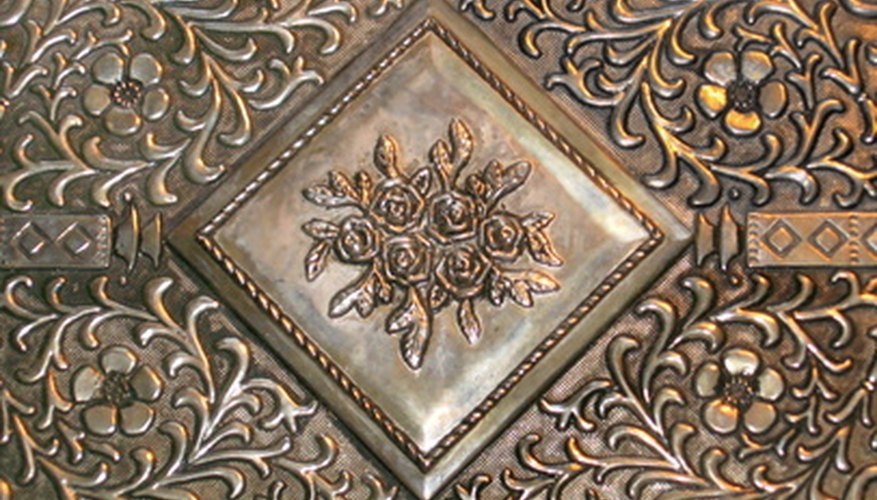Brasso is a metal cleaner that can be used on all kinds of metal except sterling silver to clean without scratching, according to Reckitt Benckiser, the manufacturer of Brasso. Although not originally intended for such use, some people also use Brasso for removing scratches from CDs, DVDs and even iPods. However, Brasso can be difficult to remove from some items, especially if it has got in to small corners and crevices. Once you know how to remove Brasso, though, you are ready to effectively use it on all kinds of items around the house.
- Brasso is a metal cleaner that can be used on all kinds of metal except sterling silver to clean without scratching, according to Reckitt Benckiser, the manufacturer of Brasso.
- However, Brasso can be difficult to remove from some items, especially if it has got in to small corners and crevices.
Use Brasso as quickly as possible to avoid having it dry too much prior to removal. Brasso will not dry immediately and generally requires vigorous rubbing; just don't stop halfway through a job requiring Brasso and come back to it later. At that point, the Brasso will be difficult to remove from small crevices.
Apply an appropriate amount of Brasso. Brasso will not only work better if you don't have an overabundance of it on the item, it also will be easier to remove. Small items like the screen on an iPod or a hand-held gaming system will only require a few drops of Brasso for scratch removal. Start with a small amount; you can always use more if needed.
Polish the item. If you haven't used too much Brasso, most of it should naturally polish away with your cloth as you work. Use a corner of your cloth to remove Brasso from corners and crevices. In many instances, a few minutes of such detail work with a cleaning cloth is really all that's needed to remove the last traces of Brasso.
- Apply an appropriate amount of Brasso.
- If you haven't used too much Brasso, most of it should naturally polish away with your cloth as you work.
Brush gently with a soft-bristled toothbrush to remove Brasso from edges and crevices of cleaned items. The bristles can usually get into spaces too small to reach with a cleaning cloth. They are soft enough that they should not damage items, but stiff enough to remove the Brasso effectively.
Cover the tip of a butter knife with a thin cloth and try this as a last resort. Keep in mind that the knife by itself will scratch most items. Avoid this by carefully covering the tip and cleaning items very slowly and gently to keep the knife from wearing a hole in the cloth. This is a last-resort option in cases where the Brasso won't come off any other way.
- Brush gently with a soft-bristled toothbrush to remove Brasso from edges and crevices of cleaned items.
- Avoid this by carefully covering the tip and cleaning items very slowly and gently to keep the knife from wearing a hole in the cloth.
Rinse the Brasso off, if appropriate for the item. Obviously, this won't work on all items. It is also likely to ruin any efforts you've made at polishing an item, but it may be your only option for extremely difficult situations when nothing else works. Rub areas with Brasso vigorously until dry.
WARNING
Do not attempt to use a toothbrush or covered knife on electronic screens or items such as CDs or DVDs. This will likely result in new or deeper scratches than were originally on the items and may even remove information from CDs and DVDs.
